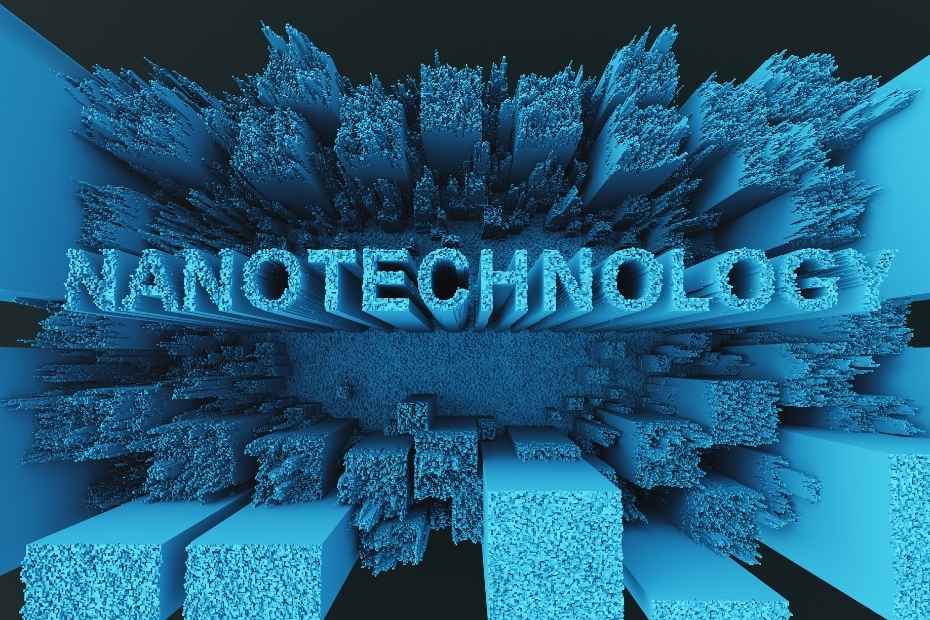Physical Address
304 North Cardinal St.
Dorchester Center, MA 02124
Physical Address
304 North Cardinal St.
Dorchester Center, MA 02124

Nanotechnology is already beginning to revolutionize architecture. Nanotechnology in Architecture such as nanoscale materials and devices can be used to create self-cleaning surfaces, create buildings that are more energy-efficient, and create structures that are more resistant to weathering and wear. In the future, nanotechnology is likely to play an even more important role in architecture, as new nanomaterials and devices are developed that offer even more amazing potential applications.
Contents
Nanotechnology is the engineering of functional systems at the molecular scale. This covers both current work and concepts that are more advanced. In its simplest form, nanotechnology is the ability to manipulate and control matter at the atomic and molecular levels. This gives rise to the possibility of creating materials and devices with unprecedented properties and functions.

The term “nanotechnology” was first coined in 1974 by Japanese scientist Norio Taniguchi. Since then, nanotechnology has made significant progress and is now being used in a variety of fields, including electronics, medicine, and energy.
There are many different ways to define nanotechnology. A common definition is “the manipulation of matter on an atomic and molecular scale”. This covers a wide range of potential applications, from improving existing materials to creating completely new ones.
Nanotechnology has the potential to revolutionize many different fields. In medicine, nanotechnology is being used to develop new drugs and diagnostic tools. In electronics, nanotechnology is being used to create smaller, faster, and more powerful devices. And in energy, nanotechnology is being used to develop new ways to generate and store energy.
The potential applications of nanotechnology are virtually limitless. And as the field continues to develop, we can only imagine what new and innovative applications will be made possible.

Nanomaterials and nanotechnology offer many potential benefits for a wide range of applications. Nanomaterials are materials with one or more dimensions measuring 100 nanometers or less. This size scale gives nanomaterials unique physical, chemical, and optical properties that can be exploited for a variety of applications. Nanotechnology is the application of nanomaterials and other nanoscale techniques to create new or improved products and processes.
Some potential benefits of nanomaterials and nanotechnology include improved strength and durability, lighter weight, improved electrical and thermal conductivity, improved optical properties, and improved chemical and biological properties. Nanomaterials and nanotechnology also offer the potential for improved environmental performance, such as reduced emissions and improved energy efficiency.
The application of nanotechnology in Architecture is still in its early stages, but there is great potential for this technology to revolutionize the construction industry. Nanotechnology can be used to create stronger and more durable building materials, as well as to create self-cleaning and self-repairing surfaces. Nanotechnology could also be used to create buildings that are able to adapt to their environment, such as changing their shape or colour in response to the weather. In the future, nanotechnology could be used to create entire buildings that can be assembled and disassembled quickly and easily, making construction faster and more efficient.
There are a number of nano-materials in architecture and construction. These materials have a number of unique properties that make them ideal for use in these industries.

One of the most common nanotechnology materials used in architecture is carbon nanotubes. Carbon nanotubes are extremely strong and lightweight, making them ideal for use in structural applications. They also have excellent thermal and electrical conductivity, making them ideal for use in a variety of energy-related applications.
Another common nanotechnology material used in architecture is nanocrystalline cellulose. Nanocrystalline cellulose is an extremely strong and stiff material, making it ideal for use in load-bearing applications. It is also fire resistant and has a low density, making it ideal for use in a variety of different applications.
Nanotechnology materials are also beginning to be used in a variety of different facade and cladding applications. These materials offer a number of benefits over traditional materials, including improved thermal insulation, improved durability, and improved aesthetic appeal.
As nanotechnology materials continue to be developed and refined, they are likely to play an increasingly important role in the architecture and construction industries. It’s worth investing in Nano materials
Nanotechnology is the study and application of extremely small particles, typically measuring just a few nanometers in diameter. This technology has been successfully integrated into a variety of products and applications, including electrochromatic glass.

Electrochromatic glass is a type of glass that can be electronically tinted or untinted, allowing it to be used in a wide range of settings. This glass is often used in office buildings and homes, as it can help to reduce energy costs by blocking out unwanted sunlight. Nanotechnology has been used to develop electrochromatic glass that is more efficient and effective than traditional electrochromatic glass.
Nanotechnology has also been used to create electrochromatic glass that is more durable and scratch-resistant. This type of glass is an ideal choice for high-traffic areas, as it can withstand the rigors of daily use. Nanotechnology has also been used to create electrochromatic glass that is more environmentally friendly, as it does not contain any harmful chemicals.
Electrochromatic glass is a cutting-edge technology that is quickly gaining popularity due to its many benefits. This glass is an excellent choice for a wide range of applications, and nanotechnology has played a key role in its development.
Nanotechnology is the study and use of materials and devices that are smaller than 100 nanometers. Nanotechnology is a rapidly growing field with many potential applications in medicine, engineering, and other fields. While nanotechnology holds great promise, there are also potential risks associated with its use.
One of the potential risks of nanotechnology is its impact on the environment. Nanomaterials can be released into the environment during the manufacturing process, and they may also be released when products made with nanotechnology are used and disposed of. Once released, nanomaterials can be transported long distances and can accumulate in ecosystems. There is concern that nanomaterials may cause harm to plants, animals, and other organisms, and that they may also contaminate water and air resources.
Another potential risk of nanotechnology is its impact on human health. Nanomaterials can be inhaled, ingested, or absorbed through the skin, and they may pose a risk to human health if they are not properly regulated. There is concern that nanomaterials may cause respiratory, gastrointestinal, and other types of damage.
Nanotechnology is a rapidly growing field with many potential applications. While nanotechnology holds great promise, there are also potential risks associated with its use. It is important to be aware of these risks and to take steps to mitigate them.

The future of nanotechnology is immensely promising. This technology has the potential to revolutionize many industries and sectors, including healthcare, energy, transportation, and communication.
The potential applications of nanotechnology are virtually limitless, and the future of this technology is very exciting.